Media | Articles
5 things you should know about the Hudson Hornet
If you think the replacement of bootleggers by professionals was the big tipping point in stock-car racing history, the latest documentary—embedded at the end of the article—from the Hagerty Drivers Foundation will likely teach you a few things. Today’s NASCAR would not exist if it were not for the drivers and teams who took a humble, straight-six-powered coupe racing in the 1950s. Here are five things you should know about the Hudson Hornet, the car that changed racing history.
The Hornet was never supposed to be a race car
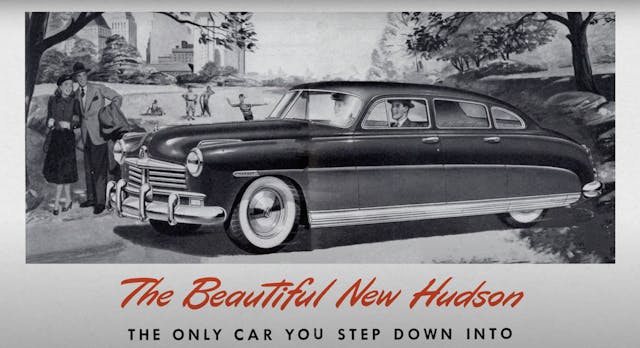
Hudson barely survived WWII. Because its manufacturing power was lower than that of General Motors or Ford, Hudson received fewer contracts, thus entering the 1940s a step or two behind the competition. Hudson was not going to roll over, though. It pushed to create something new and attractive, a vehicle that boasted safety, performance, and comfort. The Commodore was born in 1948 and primed the buying public for the coming Hornet.
It has a uni-body design
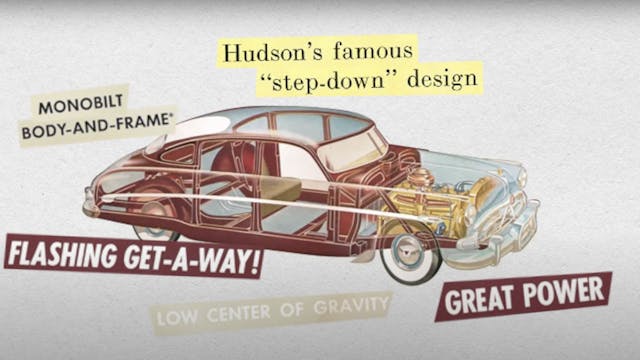
Hudson was not even close to producing the first unibody car, but its design and construction introduced what became the calling card for Hudsons of the era: the “step down.” Since the rocker panel was a structural part of the chassis, it was much more robust than on other cars, requiring engineers to either raise the floor to the height of the sill or lower the floor beneath the sill.
The Hornet was primed to win thanks to Bill France
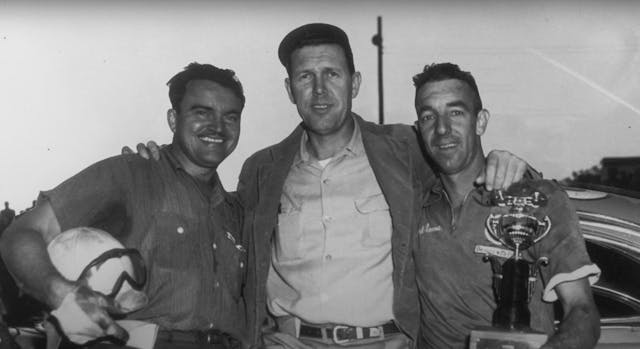
It was not until mid-1949 that driver and race promotor Bill France finally debuted a class called “strictly stock,” which showcased new cars that looked like those that people drove to work. France’s decision fed the idea that anyone could be a racing driver if they had “it” in them. Anyone not aspiring to race could at least cheer for a car that looked like the one in their driveway.
The chassis was good, but the engine was great
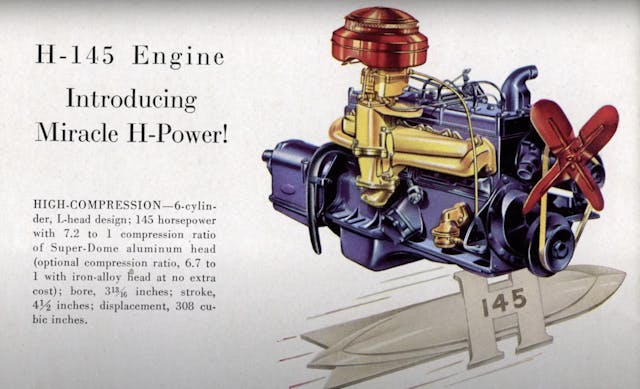
Hudson’s new-for-1951 inline-six displaced 308 cubic inches and was claimed to produce 145 horsepower. Cars in this era were just barely cracking triple-digit speeds—if at all—as pointed out by Richard Petty, who was then running a 97-hp Plymouth. As strange as it is to think of an inline-six as a competition engine, Hudson’s was the hot setup.
Marketplace
Buy and sell classics with confidence
The wheels were the weak point

Of all the teething problems that plagued these early stock cars, wheels were one of the most troublesome. The cornering forces generated in racing were so much higher than those produced by regular street driving that the wheels would liberate themselves from their axle or bend to the point of deforming. Hudson solved the problem by reinforcing the steel wheels with what amounted to a second wheel welded onto the first. You could even order the setup on production cars as a “severe duty” option.
***
The Hudson Hornet shaped the sport that would become stock-car racing. Because of its contribution, it will be documented forever in the Library of Congress thanks to the Hagerty Drivers Foundation. Check out the other 33 cars currently on the federally recognized National Historic Vehicle Register as well; there are even more fun stories to be found.
***
Check out the Hagerty Media homepage so you don’t miss a single story, or better yet, bookmark it. To get our best stories delivered right to your inbox, subscribe to our newsletters.
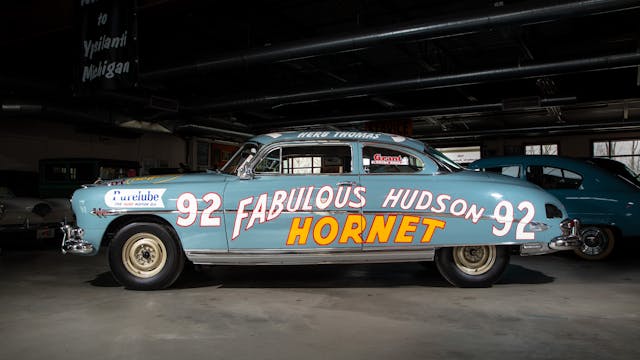














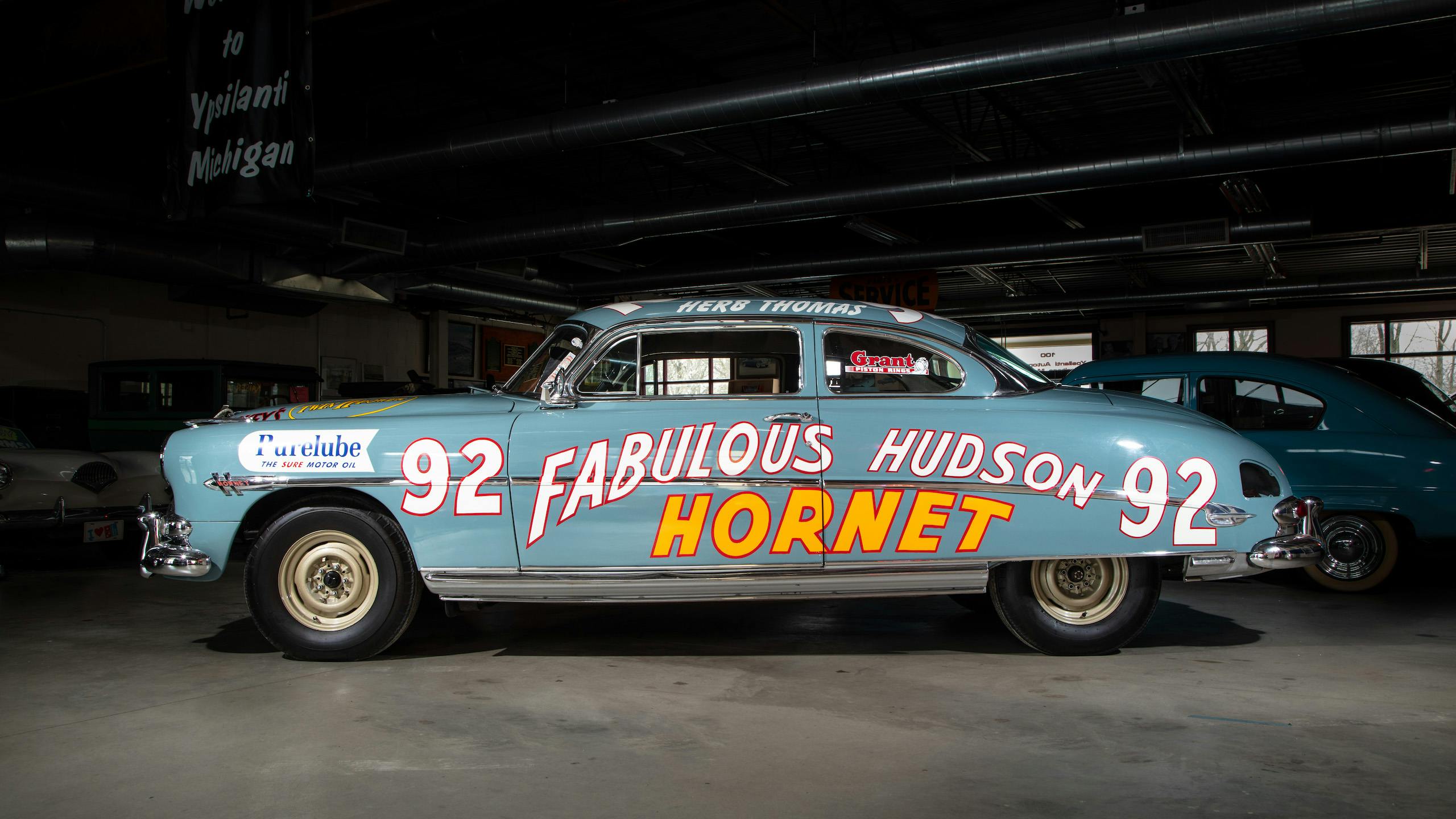
My uncle bought a new brown one every year. I loved all the comments and the memories that came with them.
In 1972 or so my late friend Jim had a aunt who has Hornet stashed away in a garage- last licensed in 68. *8th grade me says -‘Lets see if it will run?”. Poured gas down the carb, jumped 6v with moms 12v Maverick battery, Hudson lights……”Lets drive it !” Off we go in a swanky urban neighborhood with no tags,brakes, license or sense. U turn quickly due to loss of nerve and fear of death, 3 on the tree shifting and his uncle was a tough guy….who would brain us if caught. Jim committed suicide the next year. Hudsons became sad “Hashes” that were a Nash body with a Hudson grille… Time marches on. All the aforementioned in the dustbin of personal history with his families Huge duplex being razed for a condo a few years back….
Confession: I’m pushing 90 Yrs. and also, a died in the wool Ford guy.
I’ve wanted a maroon Hudson coupe ever since seeing the first one in the show room. (still on the lookout). Full depth white walls, of course and “Twin ‘H’ Power” plus a home grown 3-legged header. Hint? There’s plenty of room for a turbo charger. I like surprises. B~
In 1952, at age 6, I can still remember watching the #6 Hudson racing on our 7inch B&W tv. Been a car guy ever sine.
I remember them when I was kid. If you saw one on the road the best thing you could do was to go ahead and run in the ditch, because you didn’t know if it was coming or going.
Wondering why no mention of the “Twin H Power” option was made?
I seem to recall a claim for two carbs and 165 horsepower in 1953. Highest in-line six-cylinder power rating at the time.
I can still see my uncle working on his. Back in the day they all seemed to be the same color combination
DARK GREEN/LIME GREEN. saw quite a few……
I saw a 1947 Hudson Coupe recently on the streets of Vancouver. I know of them because my Dad owned a full sized sedan when I was 16 years old, which I learned to drive on but thankfully did not have to take the drivers test in it. I took my test in a 1951 Dodge sedan which was the car that replaced the Hudson. The Hudson was a MONSTERous car.
This car resides at the Ypsilanti Automotive Heritage Museum outside Ann Arbor MI in a beautiful 1940′ s Hudson dealership with low ceilings, jammed with everything Hudson. A not to miss if you are in the area.
I was at the last race won by a Hudson in NASCAR. Feb 1955 West Palm beach Herb Thomas. After that they all went to larger engined cars for the beach race and beyond. The engine was called twin H power 2 carbs The 92 hp Plymouth mentioned was driven by Lee Petty not Richard. When Richard (called Dick then) started in cup racing he was in a 57 Olds at the CNE. I was there then too.
Back in the early 60’s, I used to drag race a ’54 Olds in NJ. One meet, in the pits, I befriended Matty Winspur from CT, who trailered a “54 Hudson Jet with a “shoehorned” 308 cube engine, twin H power and racing headers. He convinced the NHRA it was a legal production model with some fancy paperwork. Needless to say, he won his class and stock eliminator. This was on a Saturday night. He then proceeded to drive his flatbed truck (and the jet) to Cecil County, MD for more racing the next day. I was tempted to go with his but missed out on the opportunity, He also raced a ’54 Hudson Hornet with the same setup. I wonder what happened to the Jet? Fun times long ago…..
My 1954 Super Jet coupe also had a 308 shoehorned in with twin “H” ….went great in a straight line but any turns were a handful. Raced with the “inliners” (4, 6, 8 cylinder group) at Baylands drag strip in the 80’s. Oakland, CA. Ran in “C” stock because of the twin carbs….coumpound carb 322 straight eights in light early bodies were a problem when they hacked up in second gear…..
It was hard cleaning the floorboard with a whisk broom because of the stepped down design. No vacuum cleaner in those days.
Hudson Hornets had, in my opinion, one of the most beautiful dashboards of any car.
All these reminders are beautyful history experiences, as a young mech-apprentice I do remember putting
about 100 corks into that clutch-disc and had to cut it about 3mm each side to come to a 6mm operating
thickness and did not forget to put in early automatic trany-fluid (synthetic) high pressure oil.
And usually at noon took a nap on the rear seat of the repairing beauty.What remembrences??
Smokey Yunick reversed the direction the engine rotated on at least one of the cars in a stock car race, so the force of the rotation pulled down on the left side of the car, to give better traction. I’m not sure, but I think it was a Hudson.